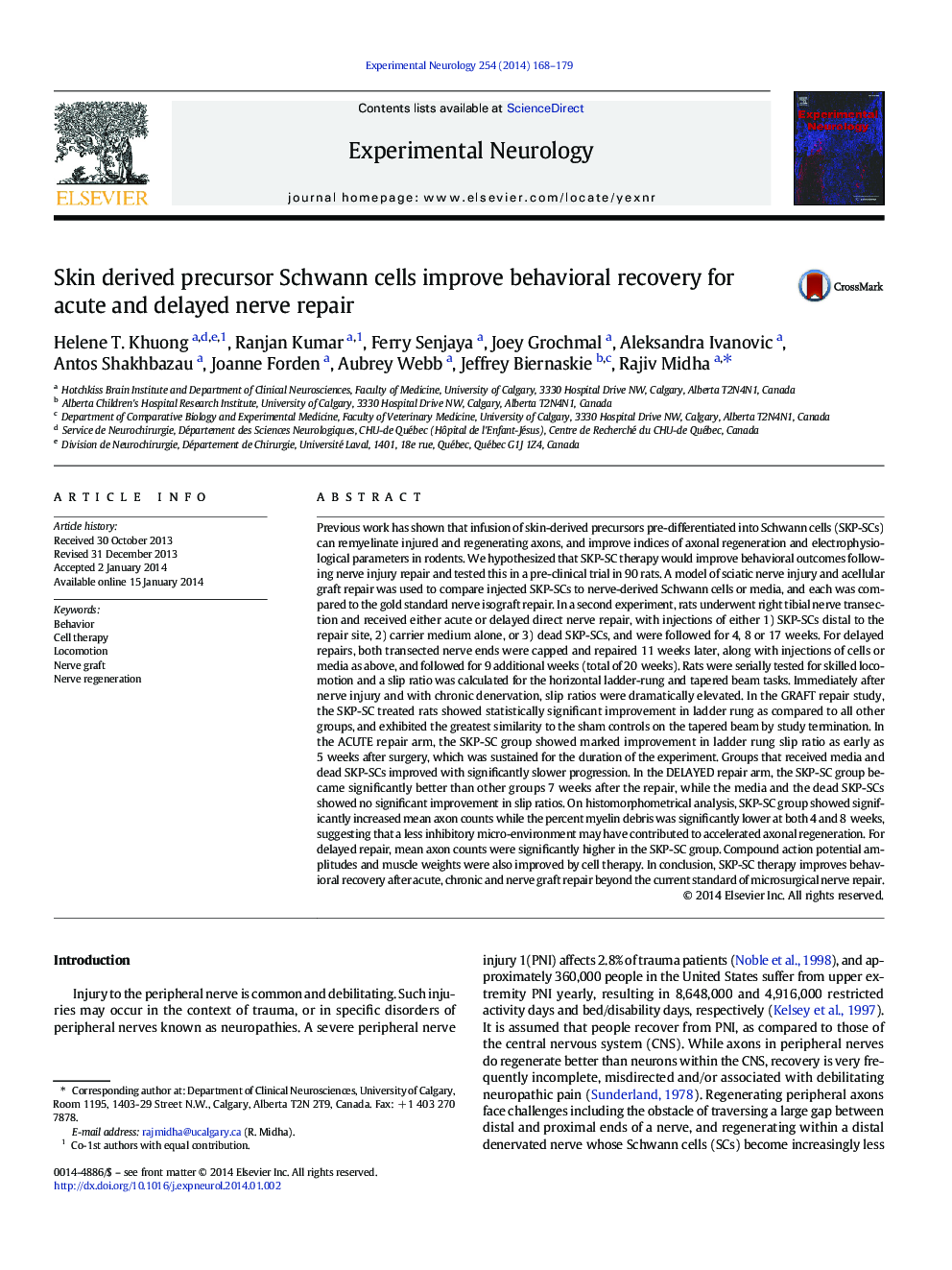| Article ID | Journal | Published Year | Pages | File Type |
|---|---|---|---|---|
| 6017881 | Experimental Neurology | 2014 | 12 Pages |
Abstract
Previous work has shown that infusion of skin-derived precursors pre-differentiated into Schwann cells (SKP-SCs) can remyelinate injured and regenerating axons, and improve indices of axonal regeneration and electrophysiological parameters in rodents. We hypothesized that SKP-SC therapy would improve behavioral outcomes following nerve injury repair and tested this in a pre-clinical trial in 90 rats. A model of sciatic nerve injury and acellular graft repair was used to compare injected SKP-SCs to nerve-derived Schwann cells or media, and each was compared to the gold standard nerve isograft repair. In a second experiment, rats underwent right tibial nerve transection and received either acute or delayed direct nerve repair, with injections of either 1) SKP-SCs distal to the repair site, 2) carrier medium alone, or 3) dead SKP-SCs, and were followed for 4, 8 or 17Â weeks. For delayed repairs, both transected nerve ends were capped and repaired 11Â weeks later, along with injections of cells or media as above, and followed for 9 additional weeks (total of 20Â weeks). Rats were serially tested for skilled locomotion and a slip ratio was calculated for the horizontal ladder-rung and tapered beam tasks. Immediately after nerve injury and with chronic denervation, slip ratios were dramatically elevated. In the GRAFT repair study, the SKP-SC treated rats showed statistically significant improvement in ladder rung as compared to all other groups, and exhibited the greatest similarity to the sham controls on the tapered beam by study termination. In the ACUTE repair arm, the SKP-SC group showed marked improvement in ladder rung slip ratio as early as 5Â weeks after surgery, which was sustained for the duration of the experiment. Groups that received media and dead SKP-SCs improved with significantly slower progression. In the DELAYED repair arm, the SKP-SC group became significantly better than other groups 7Â weeks after the repair, while the media and the dead SKP-SCs showed no significant improvement in slip ratios. On histomorphometrical analysis, SKP-SC group showed significantly increased mean axon counts while the percent myelin debris was significantly lower at both 4 and 8Â weeks, suggesting that a less inhibitory micro-environment may have contributed to accelerated axonal regeneration. For delayed repair, mean axon counts were significantly higher in the SKP-SC group. Compound action potential amplitudes and muscle weights were also improved by cell therapy. In conclusion, SKP-SC therapy improves behavioral recovery after acute, chronic and nerve graft repair beyond the current standard of microsurgical nerve repair.
Related Topics
Life Sciences
Neuroscience
Neurology
Authors
Helene T. Khuong, Ranjan Kumar, Ferry Senjaya, Joey Grochmal, Aleksandra Ivanovic, Antos Shakhbazau, Joanne Forden, Aubrey Webb, Jeffrey Biernaskie, Rajiv Midha,
